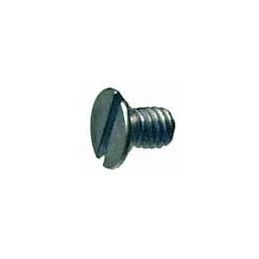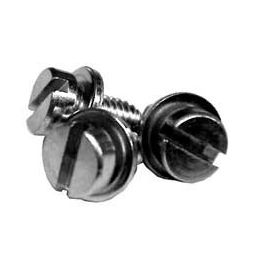In this article I am going to talk about a trick that I just starting doing with an electric fuel pump. As most of you know, I am not a fan of electric fuel pumps. Do I run them without a mechanical pump on cars? Sure, but only if the motor demands more fuel than a mechanical pump can give. So basically only on drag cars. My main reason for running mechanical fuel pumps is safety. Here is my reasoning: Let’s say you have a mechanical pump and you get in a wreck; if the motor stops, so does the pump. If you have an electrical pump, the pump keeps pumping until you shut the key off. Well let’s say you roll your car and are knocked out. If the engine is on fire, your electrical pump is going to keep feeding the fire. That’s my main reason. The other reason is I see electrical pumps can put out too much pressure. The needles and seats in most of the carb set ups we run on these vws can only handle 3 1/2lbs of fuel pressure. So if I don’t like electric fuel pumps, why am I going to install one? Read on.
If you’re like me and have multiple vws or your vw is a toy and it sits for a while, then getting it started is a bitch. The new gas we have seems to evaporate out of the carbs. It also makes the valveing in a mechanical pump stick so the that carb(s) doesn't get any fuel. Myself and others do the, “pour some gas down the carb trick and try and get it to start.” After three or four times of that it seems to run fine and the mechanical pumps starts to work. Well pouring gas down a carb throat is not the safest thing in the world. Most of us have done it and we pray we don’t have a back fire. After myself and others complaining that their cars won’t start after sitting for a while, I had to come up with something that was safer.
So here is what I did. I used a little facet fuel pump and mounted it under the fuel tank. On a bug, ghia, thing or type 3, I mounted it to pan under the tank. On a split window bus I mounted it upside down on the panel that the tank sits on, off to one side as not to drill into the bottom of the tank. On a bay window bus I mounted it to a frame member under the tank. I plumped it into the feed line that comes out of the tank. So just in line. I took the ground wire and placed it under one of the mounting bolts. I then took the power wire and hooked it to the starter solenoid wire. So on a bus, I just put a piggy back terminal on the solid wire. On a bug I ran the wire up to the ignition switch and tied into the #50 of the switch. This way the pump only comes on when you're cranking the starter. By doing this, you are putting fuel and pressure to the mechanical pump. Any sticky valves in the mechanical pump seem to unstick and we don't have to rely on the mechanical pump sucking fuel all that way from the tank. Once the starter disengages and the car is running the electrical pump stops working. The way the electrical pump works it can have fuel suck through it even when it's off, without any problems.
So now you get in the car and turn it over and the electric pump starts pumping giving fuel to the mechanical pump. The mechanical pump starts to pump fuel into the empty bowl(s) and hey, we pump the throttle and whaa laaa the car starts. No more pouring fuel down the throat of the carb(s). The car is still safe in that the electrical pump isn't working when the car is running. It only comes on when the starter is cranking. It ends up costing around $80.00.
If you’re anything like me you’re going to say, yeah good idea but I don't let my car sit that long. Three months later you will go out and try and start the car and say I wish I would have done that, while you're looking for that bottle you can pour gas into. One last note. Let’s say you're going down the road and the mechanical pump fails. Well now you can just bypass mechanical pump, take the power lead for the electrical pump off the starter side of the ignition and put it to the key side of the ignition and you’re back on the road. Then deal with fixing the mechanical pump when you get home.







